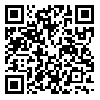BibTeX | RIS | EndNote | Medlars | ProCite | Reference Manager | RefWorks
Send citation to:
URL: http://mjiri.iums.ac.ir/article-1-3575-en.html

 , Fatemeh Esfehanian
, Fatemeh Esfehanian 
 , Atieh Amouzegar
, Atieh Amouzegar 
 , Farzaneh Sarvghadi
, Farzaneh Sarvghadi 
 , Zohreh Moossavi
, Zohreh Moossavi 
 , Mohammad R. Mohajeri-Tehrani
, Mohammad R. Mohajeri-Tehrani 
 , Mohammad E. Khamseh
, Mohammad E. Khamseh 
 , Alireza Amirbaigloo
, Alireza Amirbaigloo 
 , Ameneh Ebrahim Valojerdi
, Ameneh Ebrahim Valojerdi 

Background: Cushing's disease is the most prevalent cause of endogenous adrenocorticotrophic hormone hypersecretion. The aim of this study was to document the current clinical practice pattern in the management of Cushing's disease by Iranian Endocrinologists to determine their opinions and compare them with the current clinical practice guidelines.
Methods: An eight-item questionnaire dealing with diagnosis, treatment and follow up of patients with Cushing's disease was developed, piloted, and sent to the members of Iranian Endocrinology Society.
Results: Among 90 endocrinologists invited to participate in the survey, 76 replied. Most respondents selected overnight dexamethasone suppression test (ONDST) and assessment of 24-hour urinary free cortisol (UFC) as the best screening tests followed by midnight serum cortisol and midnight salivary cortisol. Classic high dose dexamethasone suppression test and measurement of serum ACTH were selected for localization of the primary lesion by 64.5%. The primary choice of treatment was trans-sphenoidal pituitary surgery (86.8%). For the recurrence of Cushing's disease, the preferred treatment modality was medical therapy followed by bilateral adrenalectomy, and pituitary re-surgery. In case of treatment failure after the first pituitary surgery and ketoconazole treatment, 51% chose bilateral adrenalectomy, while36.8% selected pasireotide only.
Conclusion: ONDST and UFC are two most common tests used to screen an index case with signs and symptoms of hypercortisolism. The primary choice of treatment in Cushing's disease is pituitary surgery. However, medical treatment by ketokonazol is preferred for the recurrences. Pasireotide is the second alternative after bilateral adrenalectomy in case of treatment failure after pituitary surgery and ketoconazole.
| Rights and permissions | |
 |
This work is licensed under a Creative Commons Attribution-NonCommercial 4.0 International License. |



